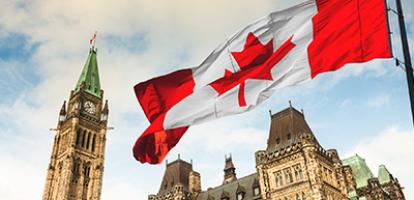Published in Embassy on April 24, 2013
By Daniel Schwanen
Twenty-five years ago Canada was in the throes of an intense national debate over its bilateral Free Trade Agreement with the United States. At the time, the agreement had not yet been ratified. The ensuing general election marked the last time electoral participation exceeded 75 per cent of registered voters, and it resulted in a victory for supporters of the agreement, which duly came into effect on Jan. 1, 1989.
Today, Canada is negotiating next-generation trade agreements that will facilitate commercial relations with other significant partners such as the European Union and many countries across the Pacific.
As well, Canada is committed to easing passage for goods and people at the United States border and reducing unnecessary regulatory barriers to trade with the United States.
Canada’s experience under the FTA shows that it is on the right track in wanting to expand trade further. Today we take free trade with the United States for granted, yet few critics would have predicted that Canada’s unemployment rate would be lower today, in the midst of a tortuous global economic situation, than it was then, before the FTA and nearing the peak of an economic expansion.
Fewer still would have predicted that Canada’s unemployment would—25 years hence—be significantly lower than the US unemployment rate, while headlines proclaimed the average Canadian household for once wealthier, on average, than American households.
Since the FTA came into effect, momentous security headwinds and significant infrastructure bottlenecks have hampered Canada-US trade. Events of a global nature such as the fall of the Berlin Wall and the rise of large emerging economies have resulted in a more ferocious global competitive environment. Yet, on the strength of the FTA, Canada has done better than most other advanced economies and many emerging ones in maintaining its share of the giant US market—and this despite a much stronger Canadian dollar today.
Well over one in 10 Canadian jobs depend on open trade with the United States. And they tend to be very good jobs indeed: a recent Statistics Canada study has concluded that export-oriented jobs pay 14 per cent more than others, on average. The United States remains by far the most important market for Canada’s nonresource exports. Sharp price increases for commodities in recent years have masked the fact that, in volume terms, Canada’s trade strengths have become more diverse under free trade. Since the pre-FTA years, growth in Canada’s non-resource export volumes has easily outpaced that of exports of raw resources and basic materials.
Indeed, largely as a result of shifts in its trade with the United States, Canada’s exports of commercial services—made up of fast-growing high value-added services such as engineering, software, entertainment, financial, or research services—has now moved into a historically unprecedented surplus position.
As attested by many sharp and ongoing regulatory, economic, social and other policy differences between Canada and the United States, none of this has resulted in a loss of sovereignty or control over Canada’s economy or social programs. Furthermore, the period since the FTA has coincided with lower share of US ownership in the Canadian economy.
Critics like to point to Canada’s underwhelming productivity performance as a failure of free trade, but this argument does not hold water. Carefully collected and analyzed evidence has shown that free trade indeed contributed to productivity growth by favoring a shift towards more productive firms within the Canadian economy. Plant for plant, Canada’s manufacturing sector is now as productive as the US one.
The culprits for Canada’s relatively low productivity growth are more likely to be found in our continued relative weakness to innovate, and in the fact that important sectors of our economy continue to be sheltered, by choice, from competition.
In short, we have seen too few examples like that of our railway industry, whose firms nimbly and strategically responded to reductions in barriers to trade within North America by becoming productivity leaders.
Today, generating new opportunities such as those created by the FTA will require Canada and the United States each engaging with other partners, addressing both traditional trade barriers and facilitating mutually beneficial “trade in tasks” around the world.
In the Trans-Pacific Partnership negotiations, as well as in the new negotiations towards a trade in services agreement, Canada will have a chance to bring its economic partnership with the United States to a new level, befitting the much more sophisticated level of Canada’s labour force and know-how than existed when Canada signed the original FTA.
Some oppose Canada taking advantage of these new opportunities. Our experience with the FTA suggests instead that Canada will benefit in spades from broadening and deepening its trade relations through these new agreements.
Daniel Schwanen is assistant vice president, research at C.D. Howe Institute.




